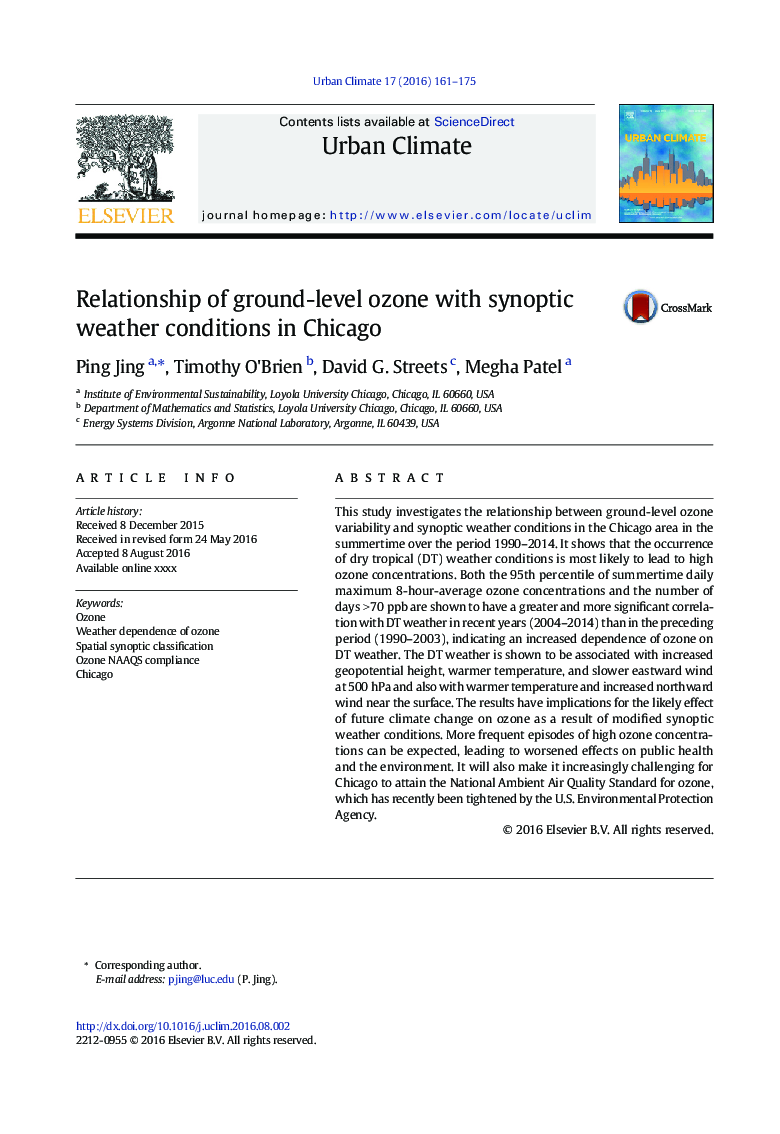| Article ID | Journal | Published Year | Pages | File Type |
|---|---|---|---|---|
| 6576991 | Urban Climate | 2016 | 15 Pages |
Abstract
This study investigates the relationship between ground-level ozone variability and synoptic weather conditions in the Chicago area in the summertime over the period 1990-2014. It shows that the occurrence of dry tropical (DT) weather conditions is most likely to lead to high ozone concentrations. Both the 95th percentile of summertime daily maximum 8-hour-average ozone concentrations and the number of days >Â 70Â ppb are shown to have a greater and more significant correlation with DT weather in recent years (2004-2014) than in the preceding period (1990-2003), indicating an increased dependence of ozone on DT weather. The DT weather is shown to be associated with increased geopotential height, warmer temperature, and slower eastward wind at 500Â hPa and also with warmer temperature and increased northward wind near the surface. The results have implications for the likely effect of future climate change on ozone as a result of modified synoptic weather conditions. More frequent episodes of high ozone concentrations can be expected, leading to worsened effects on public health and the environment. It will also make it increasingly challenging for Chicago to attain the National Ambient Air Quality Standard for ozone, which has recently been tightened by the U.S. Environmental Protection Agency.
Related Topics
Physical Sciences and Engineering
Earth and Planetary Sciences
Earth and Planetary Sciences (General)
Authors
Ping Jing, Timothy O'Brien, David G. Streets, Megha Patel,
